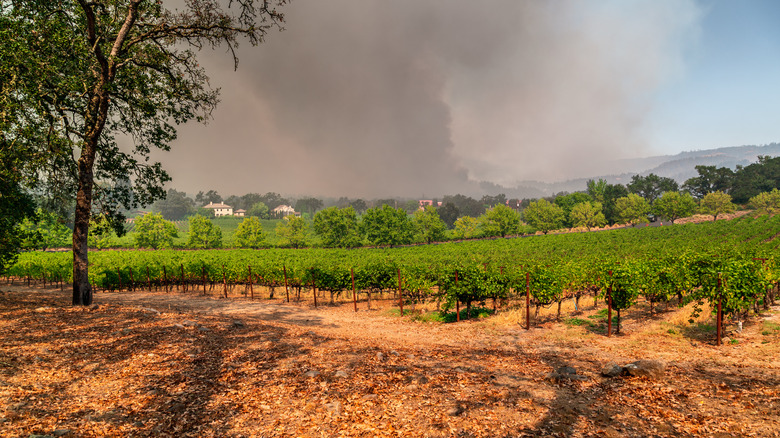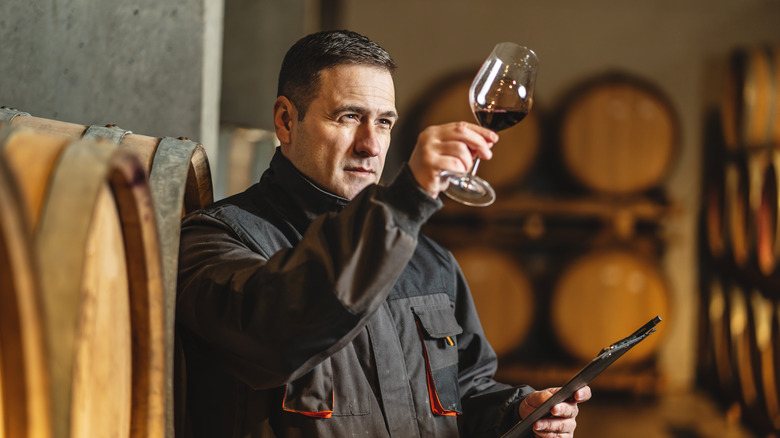After Wildfires, Scientists Are Trying To Save California's Wines
In recent years, wildfires have ravaged the Western U.S., scorching an annual average of 7 million acres since 2000, more than double the yearly amount recorded in the 1990s, according to a report by the Congressional Research Service. These unplanned conflagrations spread quickly through brush dried by the ongoing drought in the west and fanned by strong Pacific winds. Fire crews valiantly work to stave off threats to humans, animals, and property, but when faced with fires large and more forceful than ever seen before, there is little they can do (via CBS News.)
As more and more acres have burned in California, the fires have crept ever closer to the famed Napa Valley and the heart of the Golden State's wine country, reports National Geographic. While flames have lapped at vines and scorched growing grapes, another wildfire-related problem is unfolding — one that threatens even those fruits not burned: the action smoke is having on grapes and the impact it has on the finished product.
How smoke harms wine
Grapes and wine are celebrated as products of distinct terroir; they translate the soil, sun, humidity, precipitation, and air of the region they hail from into unique flavors. So, it should be no surprise that the smoke from wildfires would naturally become part of that terroir, explains Club Enologique. As that burning wood and vegetation smoke wraps around the grape, its phenols penetrate the skin and adhere to the sugars then release during fermentation or within the mouth.
While smokiness is not uncommon — or even undesired — in some wines, the type of phenols generated from wildfires tend toward distastefulness. And, as the phenols from smoke are bound within the grape, it is hard to know which grapes have been affected. This is why some winemakers have begun to begrudgingly accept the "smoke effect" as a hallmark of certain vintages.
Out of the fires, however, new research is emerging that has the potential to provide the California wine industry with important safeguards. Published in the Journal of Natural Products, University of California, Santa Cruz scientists have led a study advancing the use of analytical chemistry to detect the smoke effect on grapes. The hope is this will lead to better methods of testing for grapes suspected of being subject to wildfire smoke, allowing growers to garner an appropriate price for their harvests and for less juice to be discarded because of only presumed taint from smoke exposure.

